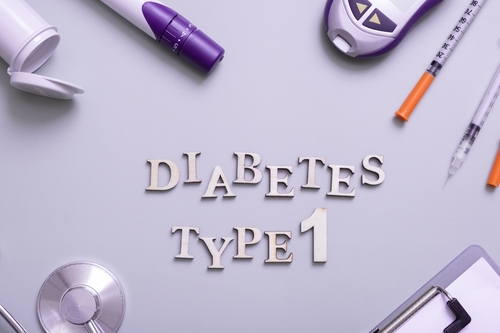
Will in-person doctor appointments go the way of the dinosaurs? That is, become extinct. The answer is far from clear.
What is undeniable is that COVID-19 has had a profound impact on the way health care is delivered. A May report found that primary care doctors visits declined by nearly 60% since the pandemic started in the United States. Social distancing protocols combined with patient fear of becoming infected with the virus have led to more and more physicians incorporating telemedicine to reduce COVID-19 spread and protect vulnerable populations (as well as themselves).
Now, in-person visits no longer require having to leave the house then sit in a waiting room to receive a physical. Many patients find this new modality attractive because online appointments can be booked immediately, and in a convenient fashion. Telemedicine also offers patients a level of privacy they otherwise would not experience in a crowded in-office setting, and generally virtual physical exams are cheaper for patients. A previous study found telemedicine visits cost approximately $80 on average, compared to more than $145 dollars for a traditional in-office visit. However, telemedicine still might end up costing patients more. The study revealed that some patients end up booking more virtual appointments, thus spending more on doctor visits. As such, more insurance companies have started to foot the costs of virtual care.
So, with that said, it sounds like in-person visits are already antiquated, right? Not quite. There’s actually now a nationwide decline in telemedicine visits, down from 69% at the peak of pandemic in April to 21% by mid-July. This reality has forced physicians to amend their mode of care and re-pivot back to in-person offerings. The director of virtual care at Michigan Medicine, an affiliate of the University of Michigan, said in an interview with STAT News, “We’re trying to right-size, but it’s really hard because during the pandemic we switched to nearly 100% virtual in some clinical areas, and we know that’s not realistic or sustainable.”
How Do Physicians Feel?
In August, Paul Hyman, MD wrote a perspective piece published in JAMA Internal Medicine, where he mused over the value of the physical exam in a time of COVID. Dr. Hyman wrote, “Many physicians would say that some diagnoses cannot be made without examining a patient in person. I am not sure how I am supposed to distinguish central vs peripheral vertigo, diagnose otitis media, or determine if someone has orthostatic hypotension without examining a person in front of me. In addition, many of us have cases where an unanticipated finding on examination feels as though it saved a patient’s life. A discovery of an irregular mole, a soft tissue mass, or a new murmur—I do not forget these cases, and I do not think the patients do either.”
Dr. Hyman added, “What was less apparent to me before the pandemic was how a thorough physical examination provides a measure of objectivity that can help me rethink a patient’s narrative. I work in Maine, which has its share of stoics. A patient recently came in feeling a bit tired but felt it was nothing, likely as a result of working too hard. His examination suggested he was in heart failure. If I had not been able to listen to his heart and lungs, and examine his jugular vein and lower extremities, I may have put too much weight on the patient’s lack of concern and missed the diagnosis.”
Are In-Person Doctor Visits Lost on the Young?
Though there’s still a strong demand for in-person doctor visits, a previous study suggests this demand may be less apparent among millennials. A survey showed that millennials are far less likely to have family physicians than people from other generations. In the US, up to 33% of millennials don’t have family doctors. Granted, these data were gleaned from a 2017 survey, so it’s unclear what impact the pandemic has had on millennial health awareness. Speaking from personal experience, this millennial writer can tell you that pre-COVID – I, like many in my generation, felt a certain sense of invincibility when it came to my health. The virus has succeeded in destroying my false sense of impregnability, so maybe the idea of in-person care, or care in general, is not lost on the youth.
What’s the Verdict?
So, we return to the original question – will in-person doctor visits become extinct? The answer seems to be – no time soon. More likely, practices will begin to adopt more of a hybridized approach, whereby they combine in-person visits with telemedicine. However, make no mistake – telemedicine is emerging, and doctors who even now are hesitant to embrace it will have to eventually acquiesce, but according Dr. Hyman, maybe that isn’t a bad thing. “Not all is lost with the emergence of telehealth,” he wrote in the JAMA article. “At least in these early phases, virtual visits seem to allow me to connect more frequently and easily with patients. With telehealth, I can see patients in their home environments, which often provides me with new information on factors that influence their health behaviors. Virtual visits respect a patient’s time. And, of course, in this pandemic when social distancing is so important, telehealth keeps patients safe. As the months go by, I will adapt and undoubtedly learn new ways to gather physical examination data. Wearable technology or guiding patients through self-examinations will offer some creative approaches to obtain tele-examination findings.”
COVID-19 has changed so much, and its long-term effects are nebulous. Whatever the outcome, rest assured that health care providers will adapt and continue to provide optimal patient care – whether in-person or from the comfort of a patient’s home.







 © 2025 Mashup Media, LLC, a Formedics Property. All Rights Reserved.
© 2025 Mashup Media, LLC, a Formedics Property. All Rights Reserved.